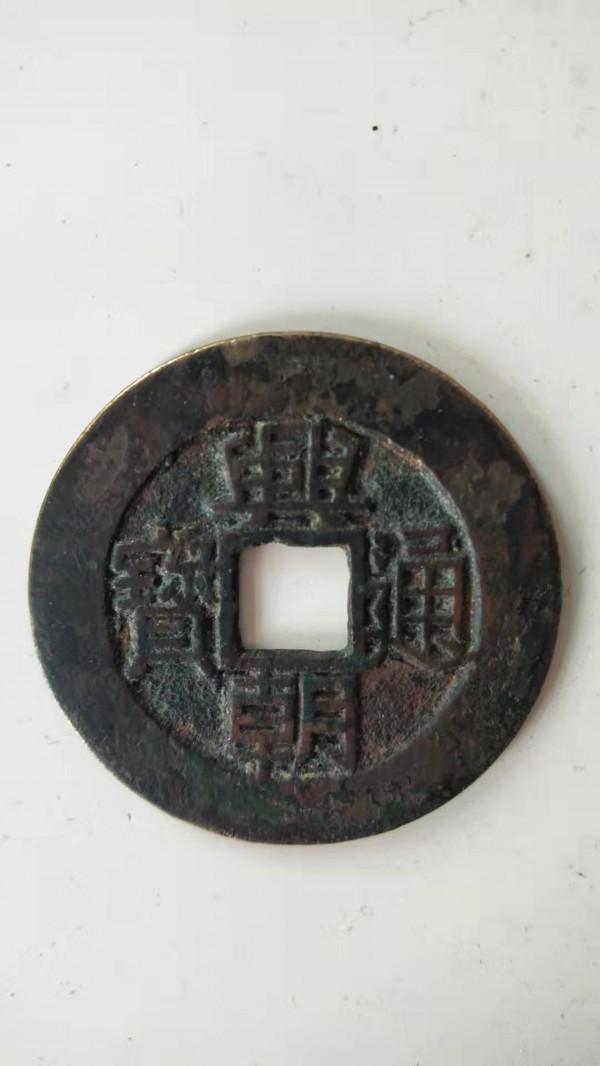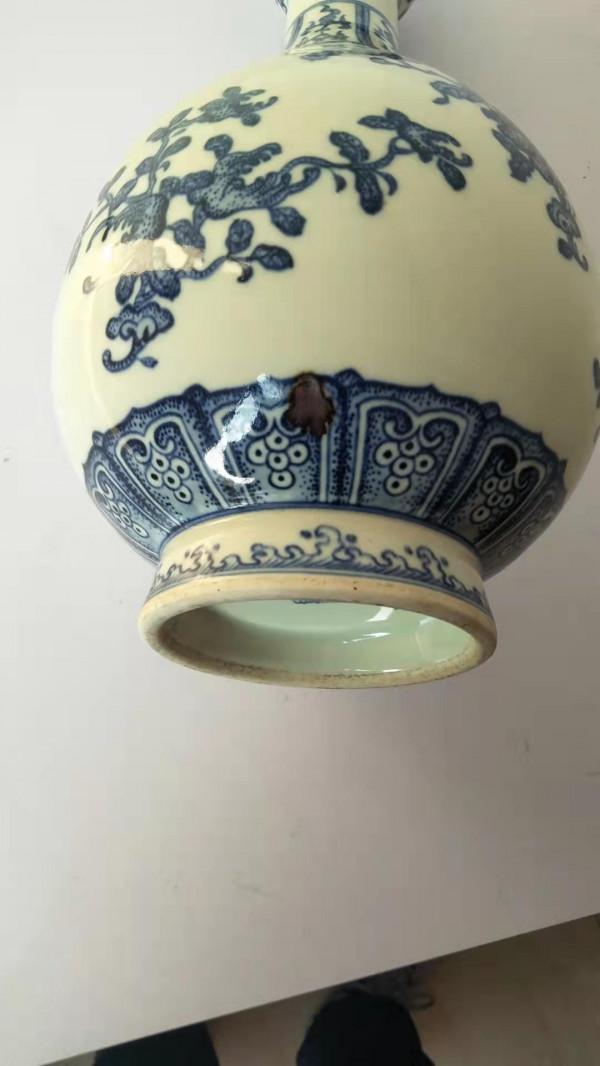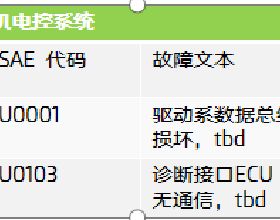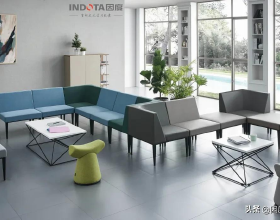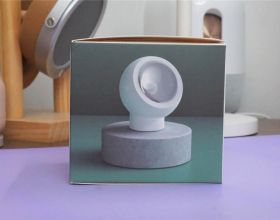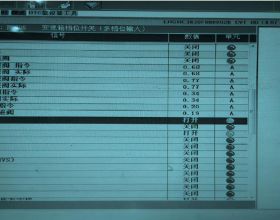興朝通寶是明末農民起義軍-大西軍入滇以後的鑄幣,大致可分為平錢(背工)、折五(背五釐)、折十(背壹分)三種,其中又各有不同的版別。
此版本為背五釐版,可見貼骨綠鏽,與錢幣渾然一體,正反面也形成了傳世古包漿,表現開門,十分難得。
傳世古:古錢出爐後從未著土,因長期氧化致使錢面牢結一層黑膜,猶塗過黑漆一般烏黑髮亮,是謂“傳世古”,又稱“黑漆古”。此類錢若經長期把玩撫摩,而使錢文及內外廓露出紅潤銅色,錢肉依然黑亮,則為“傳世古”中之上品。
此枚“興朝通寶”錢幣正面印刻著“興朝通寶”四字,字跡清晰,蒼勁有力。觀其鑄體,鑄制規整,邊圓廓正,坦平地章,穿緣廓乾淨,優良鑄工,更顯字廓深竣挺拔,精整有加。品賞其錢文,可見興朝通寶之特有字型端美亮眼,十分耐賞!
此錢幣包漿自然,底光柔和,所謂包漿是自然形成的氧化層,也有人為手盤包漿,兩者不同,但同時都有保護錢幣的功能,有如給錢幣鍍上一層保護膜,使錢幣不再氧化,便於收藏傳世,如果覺得錢幣髒,可以用清水洗,再用棉布擦乾,不要破壞包漿,破壞了包漿就相當於破壞了保護層,更重要的是包漿是鑑定新老錢幣最簡單有效的方法。細看錢幣品相完美,沒有磕缺,損毀,變形等是不可多得的收藏級銅錢,建議收藏,傳世。
青花瓷(blue and white porcelain),又稱白地青花瓷,常簡稱青花,是中國瓷器的主流品種之一,屬釉下彩瓷。青花瓷是用含氧化鈷的鈷礦為原料,在陶瓷坯體上描繪紋飾,再罩上一層透明釉,經高溫還原焰一次燒成。鈷料燒成後呈藍色,具有著色力強、髮色鮮豔、燒成率高、呈色穩定的特點。原始青花瓷於唐宋已見端倪,成熟的青花瓷則出現在元代景德鎮的湖田窯。明代青花成為瓷器的主流。清康熙時發展到了頂峰。明清時期,還創燒了青花五彩、孔雀綠釉青花、豆青釉青花、青花紅彩、黃地青花、哥釉青花等衍生品種。
青花蒜頭瓶
瓷制蒜頭瓶流行於明清,以景德鎮窯製品為多見,品種有青花、五彩、灑藍描金等。明清景德鎮窯蒜頭瓶有青花、五彩、粉彩、以及藍釉、醬釉等各種單色釉品種。明嘉靖蒜頭瓶是肩部有堆塑蟠螭裝飾;明成化蒜頭瓶,僅口部作花瓣狀,耳為隨意堆塑;明正德蒜頭瓶,在瓶腹上設出戟;明萬曆蒜頭瓶,趨於簡化,口部已無蒜頭了,但器形高大,以青花五彩為多見。清代蒜頭瓶的器形趨於輕盈秀美。
此青花蒜頭瓶,青花畫面顏色深淺不一,可見明顯的錫斑,畫面極其生動自然,不管從任何角度欣賞都是古韻十足,青花瓷是能最好表現潑墨山水畫的瓷器,這是其它瓷器所做不到的,所以青花瓷最具中國風,最能體現中國山水畫藝術的最好載體,china這個單詞大家都知道是中國的意思,可是最早這個單詞的意思就是瓷器,因為當時中國被稱之為瓷器之國,可見我國瓷器的影響之大,已經成為對外的一張藝術名片了,而當時出口瓷最多的就是青花瓷,這件青花品相完美,無穿線,磕缺,損壞,修補問題,可遇不可求,能收藏它不僅是財富身份的體現,更能體現對藝術喜愛,這件青花瓷,開門見老,具有極高的收藏價值。
英文翻譯:Tongbao in xing Dynasty was minted after the peasant insurrection army - Daxi Army entered Yunnan in the late Ming Dynasty. It can be roughly divided into three types: flat coin (back work), fold five percent (back five percent) and fold ten percent (back one minute), among which there are different versions.
This version is the back five percent version, which can be seen sticking bone green rust, which is integrated with the coin. Both sides also form the ancient patna, which is very rare to open the door.
Ancient: the ancient money after baking never soil, because of long-term oxidation of the money surface firm knot a layer of black film, still coated with black paint generally black shiny, is called "chuanshigu", also known as "black paint ancient". If this kind of money after a long time to play and touch, and make the money and inside and outside the red copper color, the money meat is still black, it is "handed down ancient" in the top grade.
This "Xing Chao Tong Bao" coin is printed on the front of the "Xing Chao Tong Bao" four words, the handwriting is clear, vigorous and powerful. View of its cast, cast orderly, the edge is round, flat chapter, wearing edge clean, excellent foundry, but also show the word profile deep tall and straight, refined add. Appreciate its money, it can be seen that xing Dynasty Tongbao unique font end beautiful bright eye, very tolerance!
This coin patina nature, the bottom light is downy, so-called wrapped slurry is a natural formation of the oxide layer, also some people to hand wrapped slurry, the two different, but at the same time have to protect the function of money, like a plated coin on a layer of protective film, make money no longer oxidation, facilitate collection handed down from ancient times, if feel money is dirty, can wash, reoccupy cloth wipe, do not destroy the wrapped slurry, The destruction of patina is equivalent to the destruction of the protective layer, and more importantly, patina is the simplest and effective way to identify new and old coins. A close look at the coin appearance is perfect, no damage, damage, deformation and so on. It is a rare collectible copper coin. It is recommended to collect and pass down.
Blue and white porcelain, also known as blue and white porcelain, is one of the mainstream varieties of Chinese porcelain. It is an under-glaze porcelain. Blue and white porcelain is made of cobalt ore containing cobalt oxide as raw material. It is painted on the ceramic body and then covered with a layer of transparent glaze. It is fired by a high temperature reduction flame. Cobalt material is blue after firing, with strong coloring power, bright hair color, high firing rate, color stability. The original blue and white porcelain appeared in the Tang and Song dynasties, while the mature blue and white porcelain appeared in the Hutian kiln of Jingdezhen in the Yuan Dynasty. Blue and white porcelain became the mainstream in Ming Dynasty. It reached its peak during the Reign of Emperor Kangxi of qing Dynasty. The Ming and Qing dynasties, also created the blue and white colorful, peacock green glaze blue and white, bean green glaze blue and white, blue and white red color, yellow blue and white, brother glaze blue and white and other derivatives.
Blue and white garlic bottle
Porcelain garlic bottle popular in the Ming and Qing dynasties, with Jingdezhen kiln products for many see, varieties have blue and white, colorful, sprinkle blue trace gold. The Ming and Qing Dynasties Jingdezhen kiln garlic bottles have blue and white, colorful, pastel, and blue glaze, sauce glaze and other single-color glaze varieties. Ming Jiajing garlic bottle is a pile of plastic dragon decorative shoulder; Ming chenghua garlic bottle, only the mouth for petal shape, ear is optional pile model; Ming Zhengde garlic bottle, in the bottle belly set a halberd; Ming Wanli garlic bottle, tend to simplify, the mouth has no garlic, but tall shape, with blue and white colorful see. The shape of qing Dynasty garlic bottle tends to be light and beautiful.
The blue and white garlic, blue screen color shades, visible obvious tin spot, picture extremely vivid and natural, no matter from any Angle to appreciate is a sensibility, blue and white porcelain is the best performance splash-ink landscape painting of China, it is the other porcelain can't do, so most Chinese wind of blue and white porcelain, most can reflect the best carrier of Chinese landscape painting art, China this word is the meaning of the Chinese is known to all, but the meaning of this word is the earliest porcelain, because the country is referred to as Chinese porcelain, is our country the influence of China, has become a foreign art card, at a time when export porcelain is blue and white porcelain, the blue and white quality perfect, no thread, ke is missing, damaged, repair the problem, It is not only the embodiment of wealth and identity, but also the embodiment of love for art. This blue and white porcelain is very valuable for collection.


